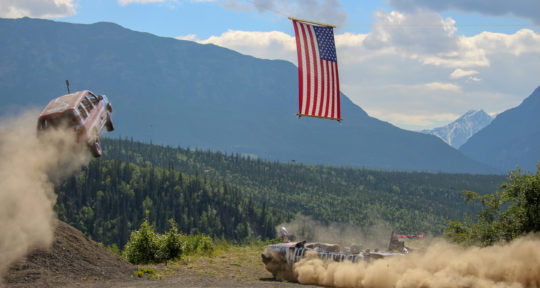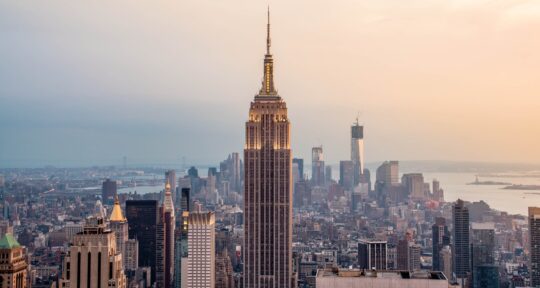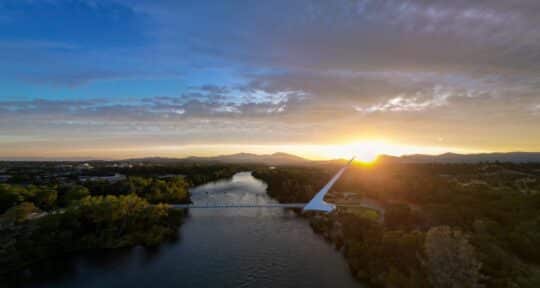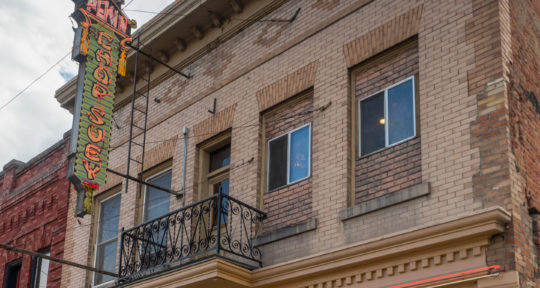Shortly after the train pulls out of downtown Anchorage, the apartment complexes that make up the urban nucleus of Alaska’s most populous city start to thin out and are gradually replaced with a forest of birch trees entombed in hoarfrost. In the wee hours of the morning, the Chugach Mountains are bathed in the pink light of the alpenglow and the pearly snow out the window is perfect and untouched. Then the train comes to a sudden, screeching stop.
“Moose on the tracks?” someone asks a crew member.
“No, a local,” she responds matter-of-factly.
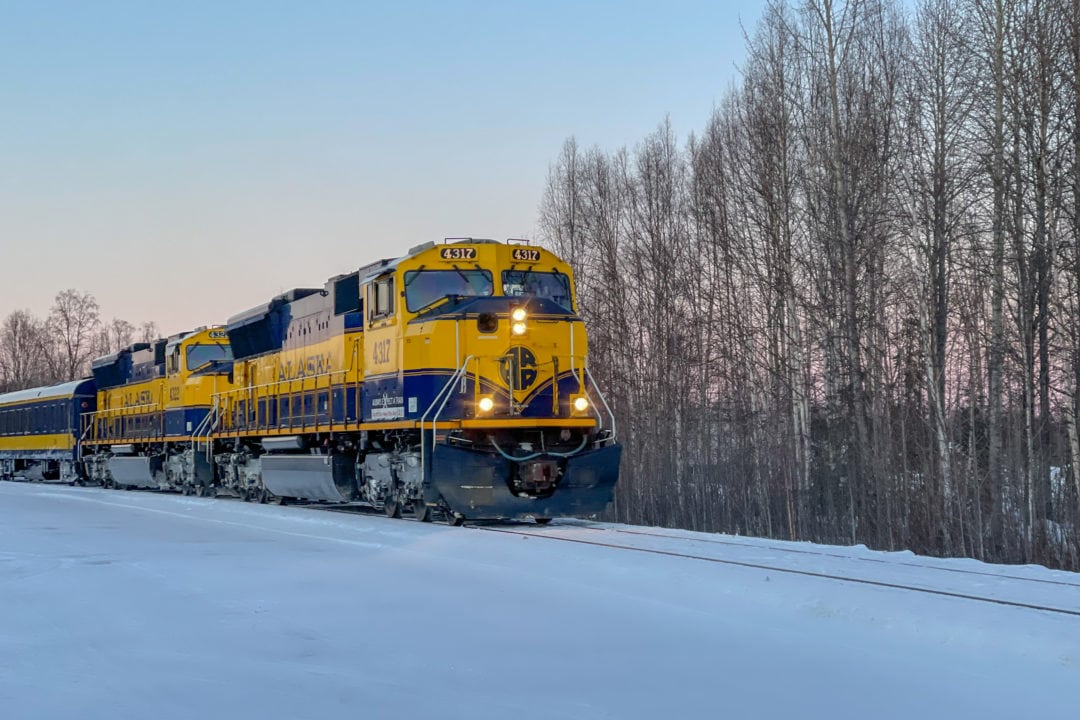
I’m aboard the Aurora Winter Train, painted navy and gold to match Alaska’s state flag, and headed northwards from Anchorage to Fairbanks. The Alaska Railroad operates one of the last whistle stop routes left in the U.S.—riders can simply extend a thumb or wave a piece of cloth to request a ride. It’s necessary in such a remote corridor of the state, where for decades hearty homesteaders have lived off-the-grid. Because there are no roads here, the train serves as a lifeline to bigger cities, necessary for buying goods or to catch up on the news (there’s little-to-no internet connectivity in this area).
While the full route snakes north into the wilder interior region of the state, I’m getting off in Talkeetna. The quirky hamlet, inspiration for the TV show Northern Exposure, received national attention when it was widely—and erroneously—reported that it had elected a cat named Stubbs as its mayor.
Two moose, three moose
Making the same drive by car takes roughly two hours, compared to the locomotive’s three. But the slower pace offers travelers an opportunity to identify tracks in the snow and search the landscape for wildlife; sightings are frequent, but unpredictable. Open meadows, lakes, and rivers are often better bets for glimpsing moose, wolves, and foxes, and each is met with excited chatter and the feverish clicking of camera shutters.
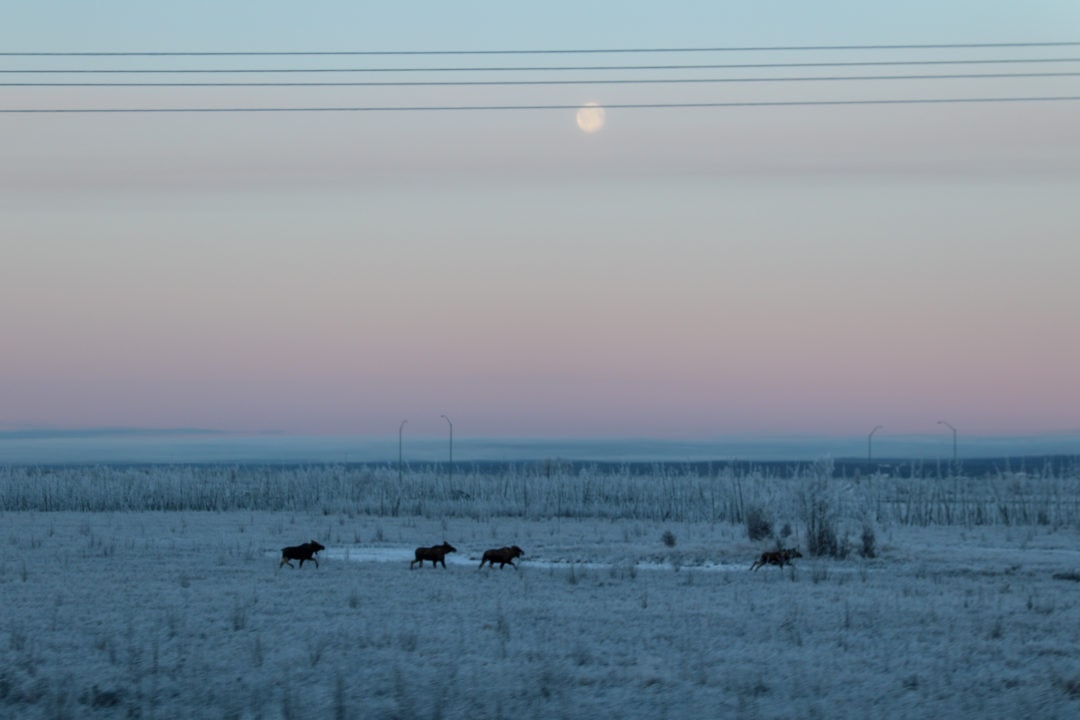
“Two moose on the left,” a crew member says over the loudspeaker. “Oh wait, no, three moose. Oh! Four moose!” The entire car presses their faces to the glass as the quartet hoofs it through the deep powder in a straight line, briefly running parallel with the tracks.
It’s not just animals—as we wend down the course, crew members trade off sharing fun facts about the areas we’ve passed: Here we’re passing through a community that holds a duct tape prom; here’s land that was affected by the 1964 earthquake; here’s the Goose Creek Tower, otherwise known as the Dr. Seuss House.
We pull into Talkeetna just before noon. Because the days are so short and the sun hangs so low in the sky, the golden hour lasts all day and the village is awash in a warm glow.
My plan is to stay at the Roadhouse, one of the last lodgings of its kind. A hundred years ago, these timber lodge and restaurant combos—known as roadhouses—were a common reprieve for travelers chasing riches in frontier Alaska. Hundreds were scattered throughout the state, but now, only a handful remain.
Butter, sugar, and flour
During normal times, the Talkeetna Roadhouse is alive with activity. Its breakfasts, specifically the sourdough pancakes (made with a starter that’s reportedly more than 100 years old), are legendary. In the dining area, long banquet-style tables forced strangers to sit elbow-to-elbow, passing apple butter and swapping stories. This season, due to COVID-19, breakfast is only offered to those staying overnight in the historic building.
When the climbing boom took off—thanks to new topographic maps and the ability to land on a glacier near the base of Denali, the highest peak in North America—the Roadhouse became the unofficial starting and ending point. “Everyone knew that the Roadhouse was the place you went for that last meal before you headed off and the first meal you got after coming back down,” said Trisha Costello, the Lady of the House.
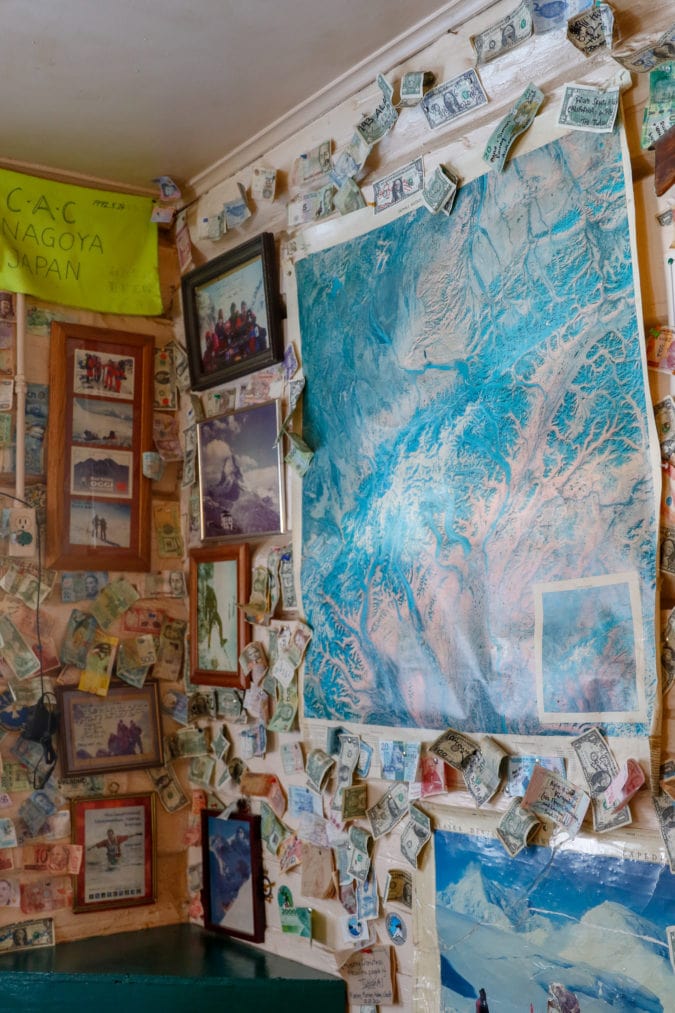
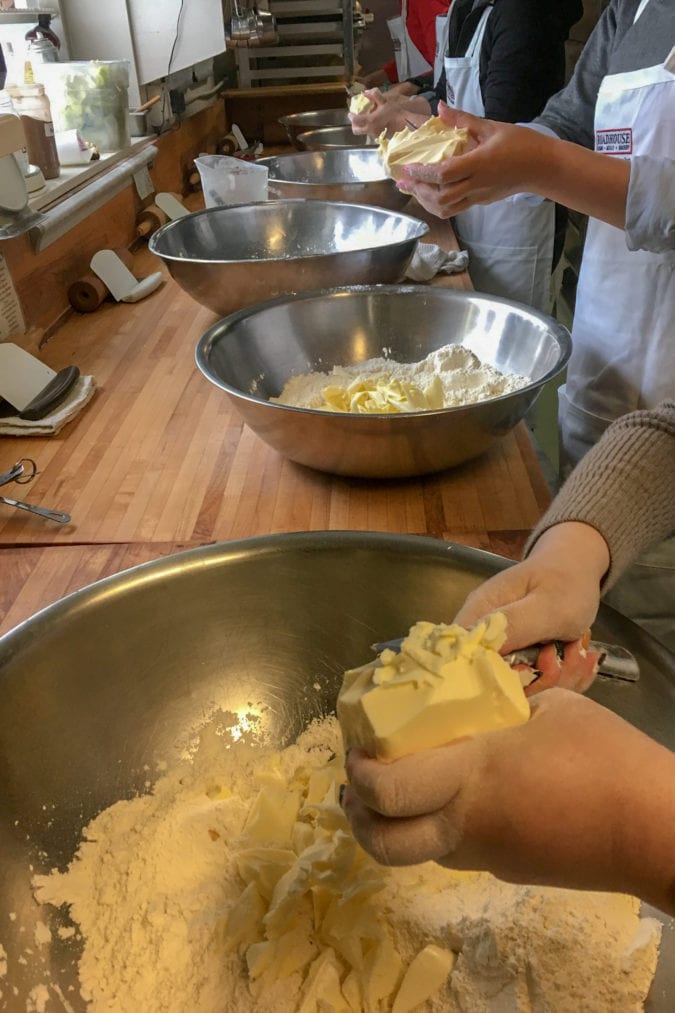
Because of its connection to climbing, mountaineering plays a big role in the Roadhouse’s decor. The walls are festooned with black-and-white photos of significant summits (like Susan Butcher, who took a team of huskies with her up Denali), maps, snowshoes, flags, foreign currency, and commemorative T-shirts signed by expedition groups.
In the slower months, Costello invites guests into her famed kitchen to walk them through the finer points of turning butter, sugar, flour, salt, and heaping piles of fruit into the signature pies that locals and tourists alike flock to sample. Students peel apples, roll dough, and assemble streusel by hand. If the pupils need a reminder of the next step, all they need to do is glance over at the work table where the instructions are written in flour.
After the more than 2-hour class, students remove their aprons (theirs to keep) and Costello sends them off to explore the little community while their masterpieces bake. The pies will be cooled and packaged for their return trip the following day.
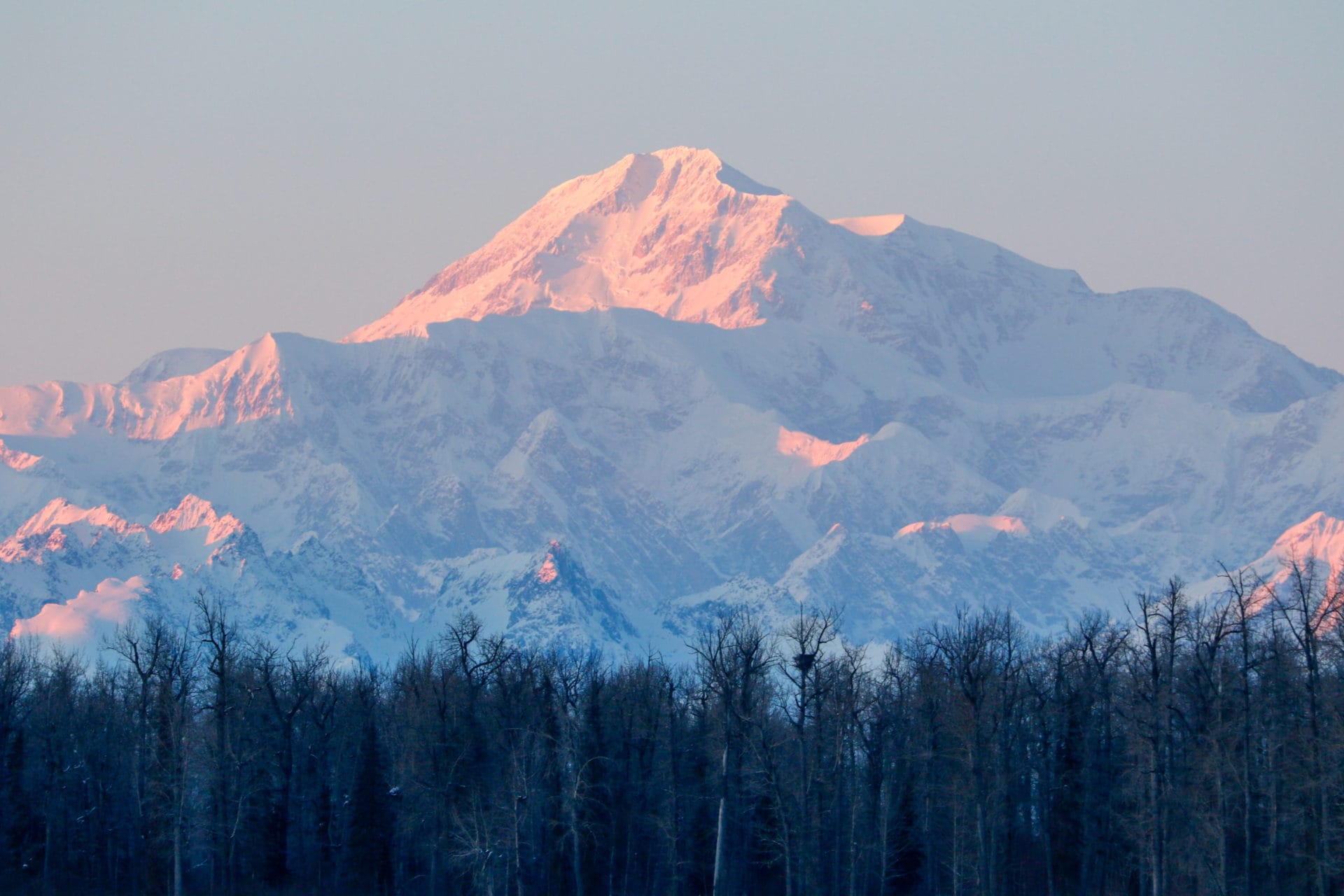
Trio of rivers
In a typical summer, Talkeetna is flooded with tourists. But in the winter, the community is magically peaceful. The entire main street of Talkeetna is only about two blocks long and the Roadhouse sits smack in the middle. Anchoring the eastern end are Aurora Dora’s northern lights photography studio and Nagley’s, a general store whose sign advertises hunting and fishing licenses, ammunition, fountain soft drinks, “fishin’ tackle,” ice, and sandwiches. Inside of Nagley’s is a small coffee stand; shirts and stickers made in memory of “Mayor” Stubbs (he passed away in 2017 at 20 years old) are also available.
Going west, other businesses include the Fairview Inn, a classic saloon with local memorabilia, including a corner dedicated to President Harding, who died days after visiting; a brewery; a pizzeria; a coffee shop; a marijuana shop (in 2014, Alaska became the third state to legalize recreational cannabis); a historical society; a handful of art galleries; a few tour operators (all closed in the winter); and a campground.
I walk to the end of the road and down a short trail to the banks of the braided Talkeetna, Chulitna, and Susitna rivers. It’s been single-digit temperatures or colder for months, but great swaths of waterway are still open, a testament to the power of the trio of rivers. Because it’s a “bluebird day” (clear and cloudless), Denali and her sidekicks, mounts Foraker and Hunter, appear crisp and defined in the distance. Considering the Alaska Range is more than 60 miles away, it’s hard to fully grasp how massive these mountains are.
On Costello’s recommendation, I download the Talkeetna Historical Society guided walking trail app. From the river bank, I follow the map through some historic homesites and past aging pioneer cabins, to the village airstrip where bush planes have taken off for more than 70 years. Today, most planes lifting off are for flightseeing tours, either circling Denali’s peak or landing on Ruth Glacier, just 10 miles from the summit.
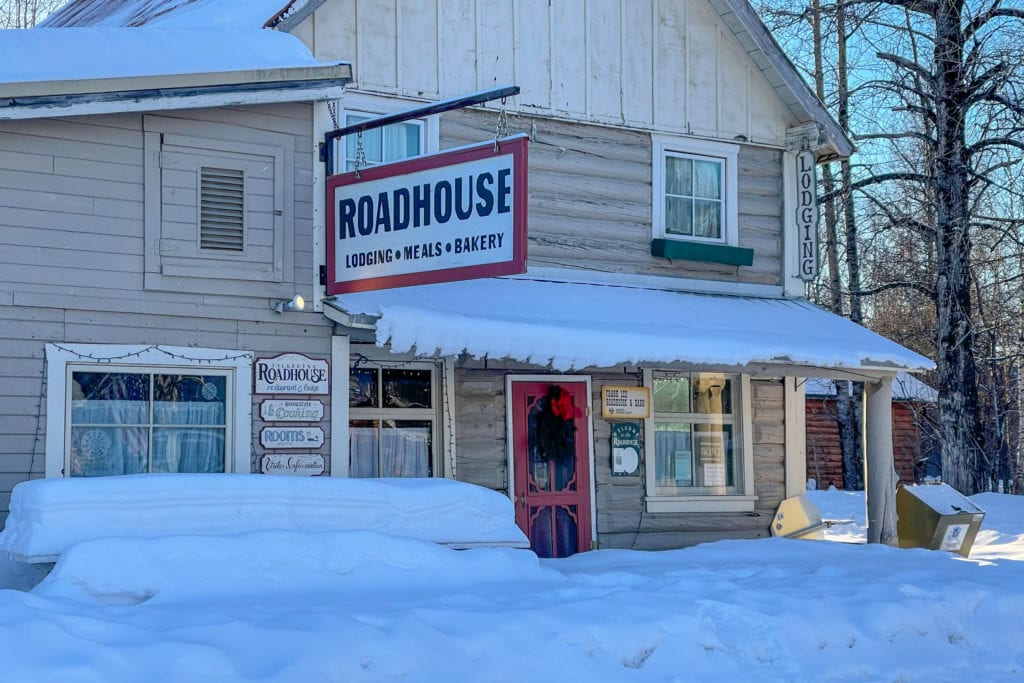
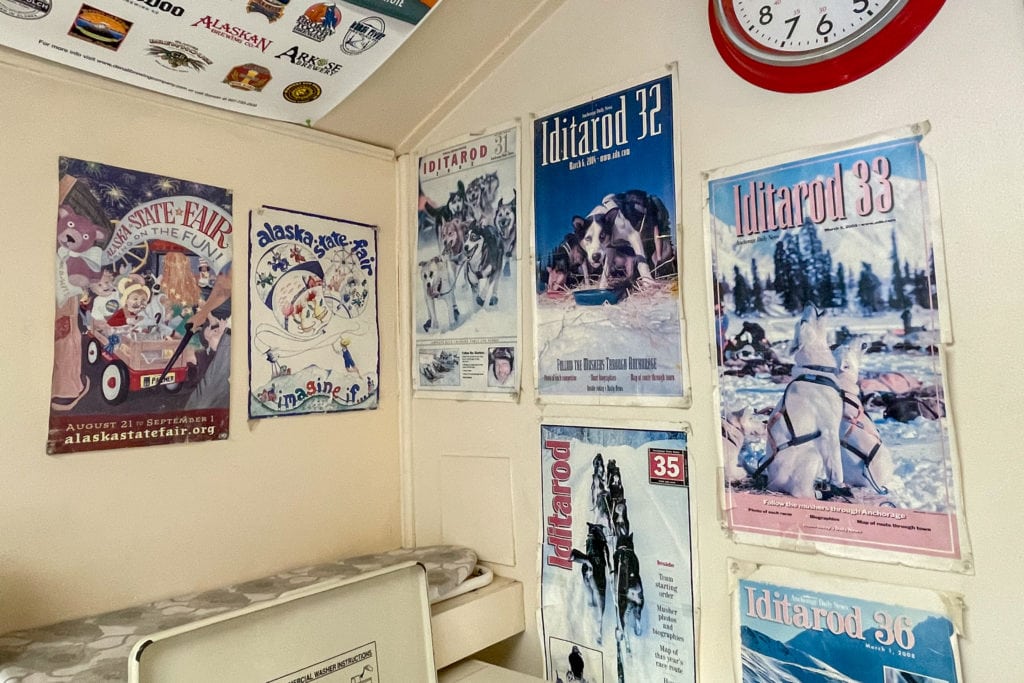
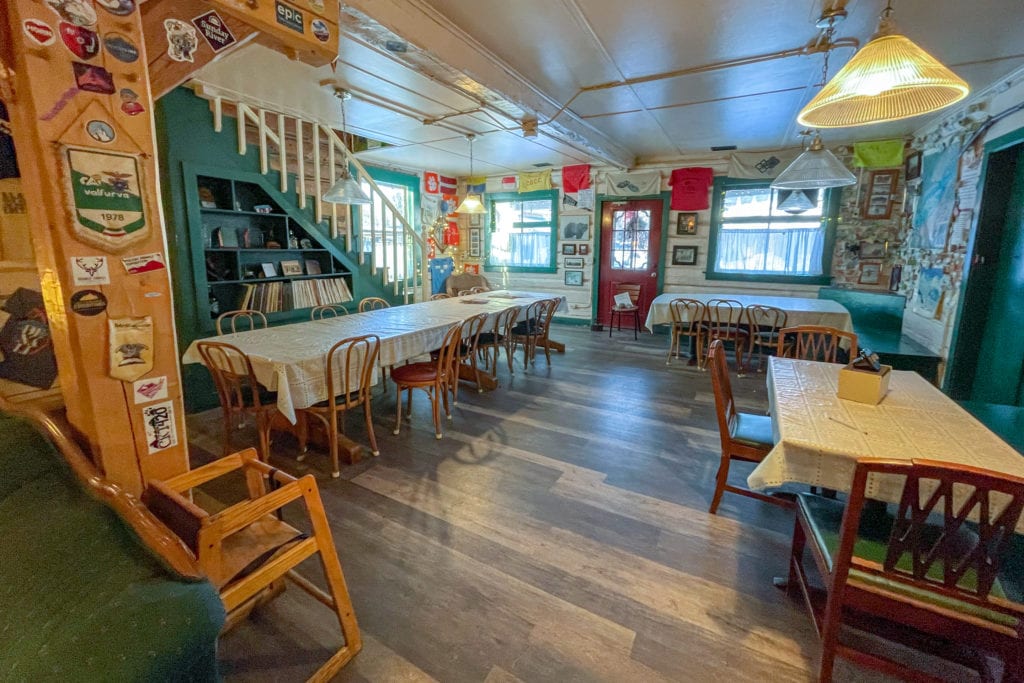

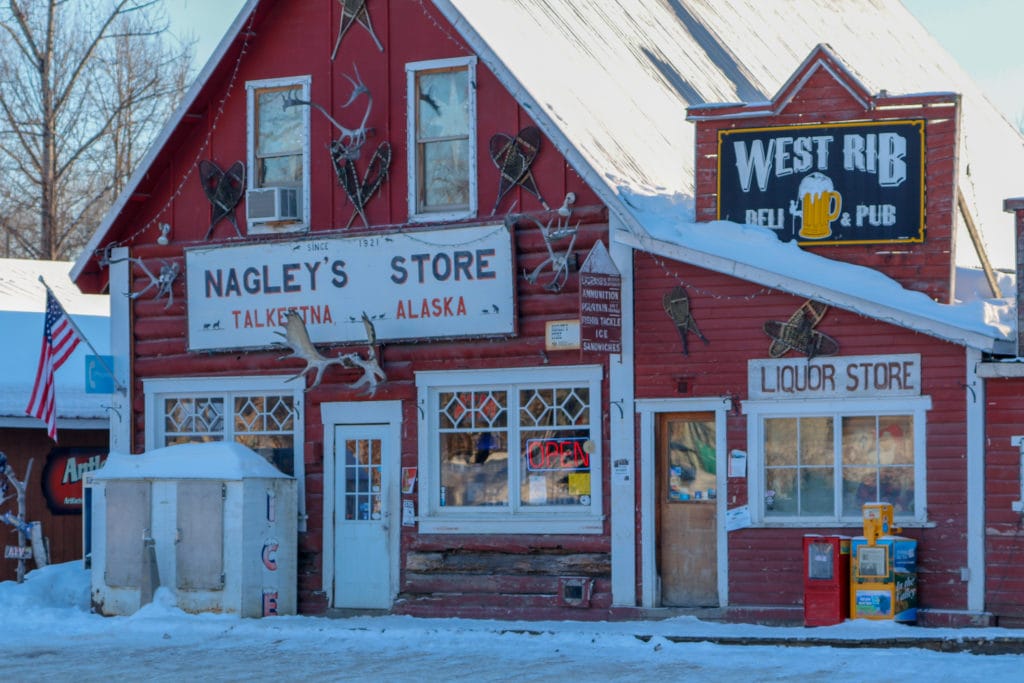
Northern lights
It’s late in the day, the sun has started to sink below the horizon, and the temperature is rapidly dropping. I duck into Denali Brewing Company for to-go beer and then scamper next door to Mountain High Pizza Pie to pick up a pizza topped with reindeer sausage before returning to the Roadhouse with my spoils.
As I settle before the fire with my dinner and my book, I can hear an old wooden radio playing jazz in the other room. It’s a perfectly relaxing and cozy venue for what I can only hope will be the night’s entertainment: the aurora borealis.
Talkeetna sits on the southern edge of the auroral oval, a tube encircling the polar regions of the world. On clear nights with high solar activity levels, the hamlet gets an up-close view of the astronomical phenomenon that paints the night sky with green, purple, and red ribbons of light.
However, while it’s clear tonight, the action is non-existent. After a few hopeful hours, I retreat to my room, just off the main dining area, and find hot chocolate mix and ginger molasses cookies waiting for me. It feels like an appropriate next best thing.
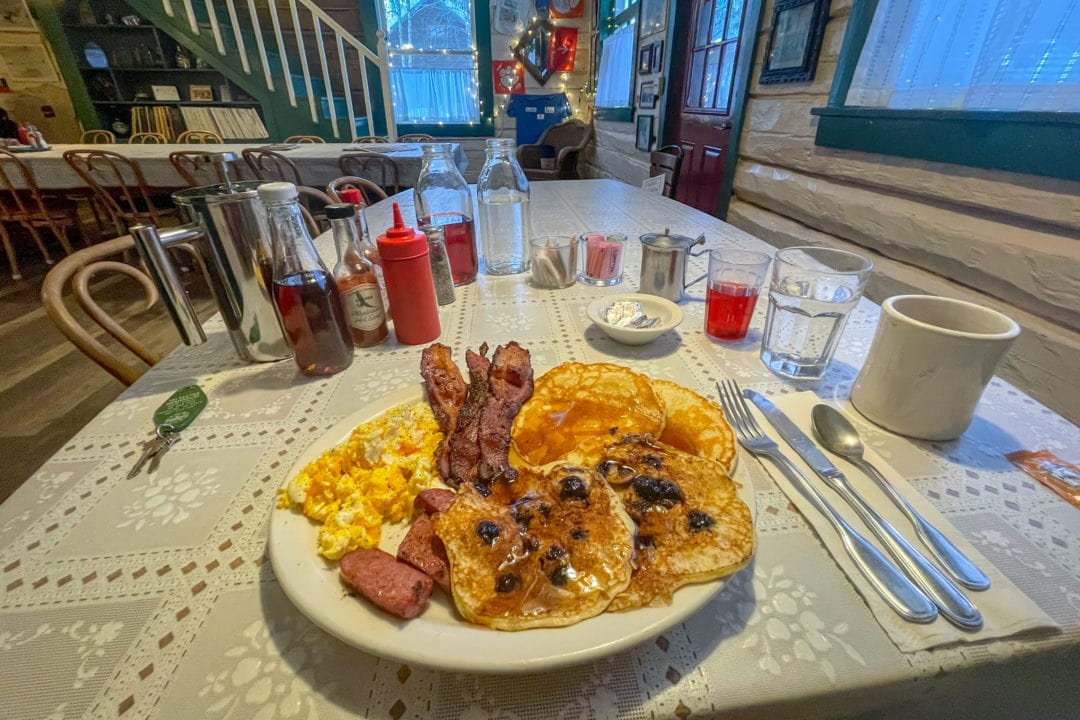
The following morning, I awake to the smell of sizzling meats and the chatter of children in the dining room. A family staying in one of the Roadhouse’s auxiliary cabins is already a full carafe of syrup deep into blueberry sourdough pancakes and reindeer sausage when I emerge from my room.
Costello greets me with a full breakfast of my own: hot cakes, scrambled eggs, sausage, bacon, and coffee. If I were a mountaineer just down from Denali, it would be a fitting first course, though my only plan for the day is to rent a fat tire bike from North Shore Cyclery. I spend the daylight hours tootling around the trails that criss-cross the village. At one point, I find myself sharing the path with a musher and his team of sled dogs. They easily beat me in a race.
By mid-afternoon, I hurry back to the Roadhouse, just in time for Costello to drop me back at the train station as the locomotive appears around the bend. She hands me another bag of cookies and wishes me a good return trip just before I board the idling train.

